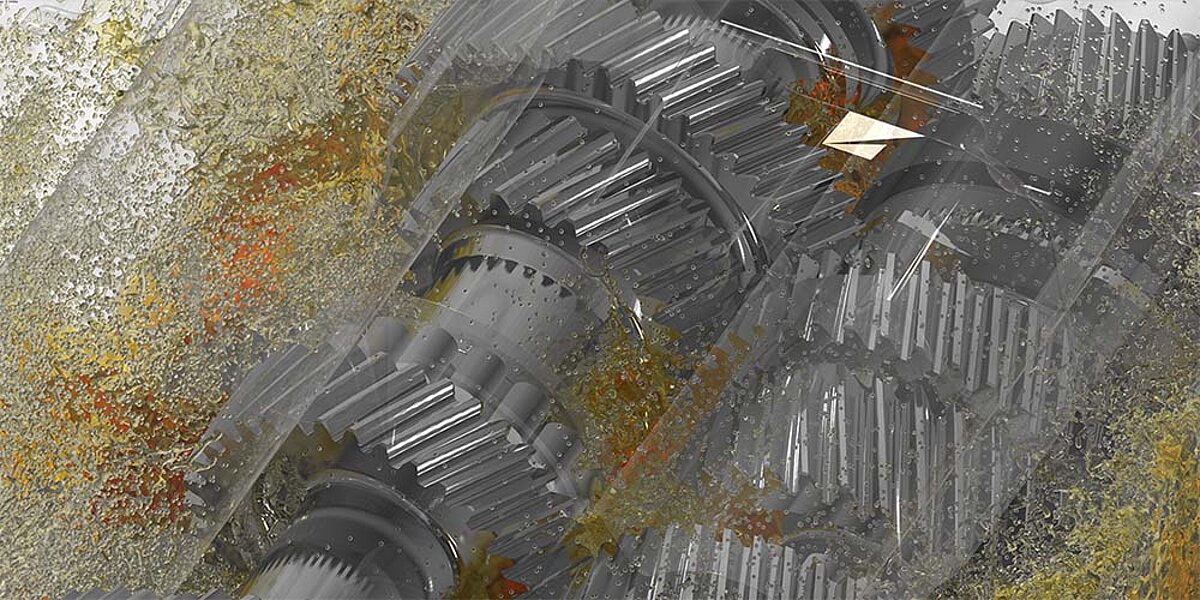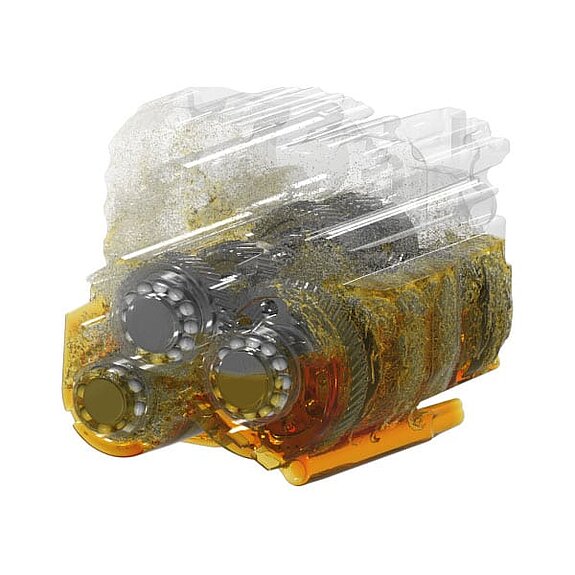We use a wide variety of processes on a wide variety of gearboxes, depending on the issue at hand.
Gearbox lubrication

Simulation of gearbox lubrication

The physics is very complex when simulating oil distribution in the gearbox: moving grids, multiphase (air and oil), narrow gaps, complex geometry, longer time periods to be considered, influence of temperature on oil properties. Not to mention the acceleration loads in automotive applications (cornering, acceleration and braking).
And admittedly, a glass gearbox in a test is not really tingly, is it?
The topic is predestined for us, since we have and will keep a head start.
Why are such simulations carried out? It's quite simple: If I have too much oil in the gearbox, efficiency drops and losses increase. If I have too little oil or not enough oil on some bearings, the bearing seizes and the gearbox is defective. In addition, the oil has the task of dissipating heat. The goal is therefore to achieve optimum efficiency with sufficient lubrication and cooling of all bearings and gear pairs.
Many well-known OEMs rely on our expertise here.
We would be happy to help you build more efficient gearboxes and meet your CO² requirements.
Why are such simulations carried out? It is quite simple: If I have too much oil in the gearbox, the efficiency decreases and the losses increase. If I have too little oil or not enough oil on some bearings, the bearing seizes and the gearbox is defective. In addition, the oil has the task of dissipating heat. The goal is therefore to achieve optimum efficiency with sufficient lubrication and cooling of all bearings and gear pairs.
Video
Gearbox lubrication keywords
- Oiling
- CO2 load
- Gearbox
- Gearbox lubrication
- Gearbox cooling
- Gearbox temperature
- Glass gearbox
- Cooling
- Multiphase
- M&P OilSim ©
- Oil simulation
- Oil sump
- Oil distribution
- Frictional heat
- Lubrication
- Temperature
- Ventilation losses
- Losses
- Heat dissipation gear
- Watts losses
- Efficiency